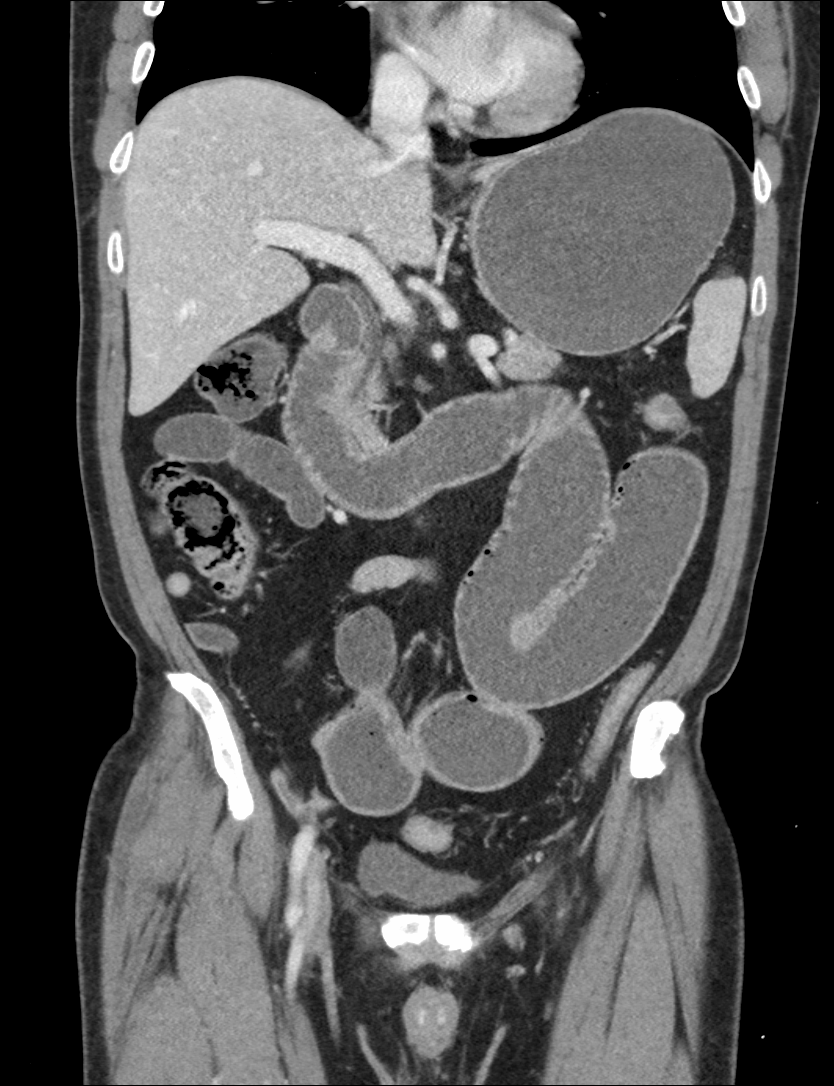Monday Poster Session
Category: Small Intestine
P4106 - A Rare Case of Fiber-Induced Small Bowel Obstruction: A Case Report
Monday, October 27, 2025
10:30 AM - 4:00 PM PDT
Location: Exhibit Hall

Richard Pearce, MD
University of South Florida Morsani College of Medicine
Tampa, FL
Presenting Author(s)
Richard Pearce, MD, Scott Manski, MD
University of South Florida Morsani College of Medicine, Tampa, FL
Introduction: Small bowel obstruction (SBO) is a common cause of hospital admissions. However, SBO secondary to accidental or iatrogenic ingestion of over-the-counter (OTC) fiber supplements is rare. Although fiber supplements are widely used to promote digestive health, they can pose risks when consumed improperly or in excessive quantities. We present a case of SBO following mistaken ingestion of a large volume of OTC fiber, highlighting the importance of thorough history-taking in identifying unusual causes and demonstrating successful non-operative management.
Case Description/
Methods: A 53-year-old male presented with severe abdominal pain, distension, and nausea. History revealed that, in preparation for an outpatient colonoscopy, he inadvertently consumed 13 servings of an OTC fiber supplement instead of the prescribed bowel preparation. He drank 2 scoops of fiber powder in 8 oz of liquid multiple times, completing 13 servings the night before the procedure. Symptoms began shortly after ingestion and he presented the following day. On arrival, he was hemodynamically stable with an elevated lactic acid level (3.6 mmol/L) and leukocytosis (12.24 × 10⁹/L). A computed tomography scan of the abdomen showed findings concerning for SBO with pneumatosis. Surgical consultation was obtained, and a non-operative management plan was initiated. Nasogastric (NG) decompression yielded 1400 mL of gelatinous fluid, resulting in mild symptom improvement. The patient received intravenous fluids and intermittent polyethylene glycol (PEG) lavage through the NG tube. Over time, his NG output decreased, lactic acidosis resolved, and he resumed passing bowel movements with complete resolution of abdominal pain. Following clinical improvement, the NG tube was removed, his diet was advanced, and he was discharged home in stable condition with education on appropriate colonoscopy preparation.
Discussion: This case illustrates the potential for significant morbidity associated with excessive fiber supplementation and the importance of clear communication regarding colonoscopy bowel preparation. It highlights the successful use of conservative management with NG decompression and PEG lavage in resolving fiber-induced SBO. Furthermore, it underscores the importance of a multidisciplinary approach to optimize patient outcomes and avoid unnecessary surgical intervention. Increased clinician awareness of this uncommon etiology can facilitate prompt diagnosis and effective management.

Figure: Computed tomography (CT) scan of the abdomen with small bowel obstruction with pneumatosis. Marked distention of the stomach with liquid food material.
Disclosures:
Richard Pearce indicated no relevant financial relationships.
Scott Manski indicated no relevant financial relationships.
Richard Pearce, MD, Scott Manski, MD. P4106 - A Rare Case of Fiber-Induced Small Bowel Obstruction: A Case Report, ACG 2025 Annual Scientific Meeting Abstracts. Phoenix, AZ: American College of Gastroenterology.
University of South Florida Morsani College of Medicine, Tampa, FL
Introduction: Small bowel obstruction (SBO) is a common cause of hospital admissions. However, SBO secondary to accidental or iatrogenic ingestion of over-the-counter (OTC) fiber supplements is rare. Although fiber supplements are widely used to promote digestive health, they can pose risks when consumed improperly or in excessive quantities. We present a case of SBO following mistaken ingestion of a large volume of OTC fiber, highlighting the importance of thorough history-taking in identifying unusual causes and demonstrating successful non-operative management.
Case Description/
Methods: A 53-year-old male presented with severe abdominal pain, distension, and nausea. History revealed that, in preparation for an outpatient colonoscopy, he inadvertently consumed 13 servings of an OTC fiber supplement instead of the prescribed bowel preparation. He drank 2 scoops of fiber powder in 8 oz of liquid multiple times, completing 13 servings the night before the procedure. Symptoms began shortly after ingestion and he presented the following day. On arrival, he was hemodynamically stable with an elevated lactic acid level (3.6 mmol/L) and leukocytosis (12.24 × 10⁹/L). A computed tomography scan of the abdomen showed findings concerning for SBO with pneumatosis. Surgical consultation was obtained, and a non-operative management plan was initiated. Nasogastric (NG) decompression yielded 1400 mL of gelatinous fluid, resulting in mild symptom improvement. The patient received intravenous fluids and intermittent polyethylene glycol (PEG) lavage through the NG tube. Over time, his NG output decreased, lactic acidosis resolved, and he resumed passing bowel movements with complete resolution of abdominal pain. Following clinical improvement, the NG tube was removed, his diet was advanced, and he was discharged home in stable condition with education on appropriate colonoscopy preparation.
Discussion: This case illustrates the potential for significant morbidity associated with excessive fiber supplementation and the importance of clear communication regarding colonoscopy bowel preparation. It highlights the successful use of conservative management with NG decompression and PEG lavage in resolving fiber-induced SBO. Furthermore, it underscores the importance of a multidisciplinary approach to optimize patient outcomes and avoid unnecessary surgical intervention. Increased clinician awareness of this uncommon etiology can facilitate prompt diagnosis and effective management.

Figure: Computed tomography (CT) scan of the abdomen with small bowel obstruction with pneumatosis. Marked distention of the stomach with liquid food material.
Disclosures:
Richard Pearce indicated no relevant financial relationships.
Scott Manski indicated no relevant financial relationships.
Richard Pearce, MD, Scott Manski, MD. P4106 - A Rare Case of Fiber-Induced Small Bowel Obstruction: A Case Report, ACG 2025 Annual Scientific Meeting Abstracts. Phoenix, AZ: American College of Gastroenterology.
